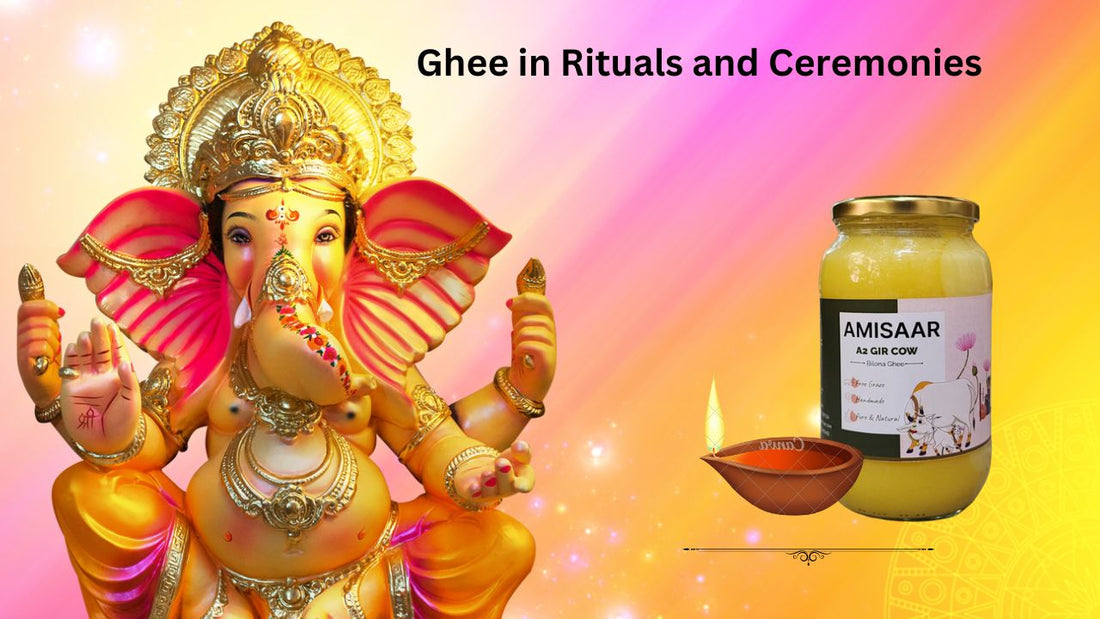In the realm of rituals and ceremonies across various cultures and traditions, there exists a common thread woven through the fabric of many practices—the use of ghee. This golden, clarified butter holds a significant place in spiritual rites, symbolizing purity, sustenance, and divine blessings. Let's delve into the sacred role of ghee in rituals and ceremonies, exploring its symbolism, significance, and practical applications.
Symbolism of Ghee
Ghee, derived from the Sanskrit word "ghṛta," carries profound symbolism in many spiritual traditions. It is often seen as a representation of purity, illumination, and auspiciousness. The process of clarifying butter to obtain ghee involves separating milk solids and water, leaving behind a luminous substance. This process mirrors the purification of the soul, removing impurities to reveal one's inner radiance.
Moreover, ghee is considered a symbol of nourishment and sustenance. Just as it provides energy and vitality to the body, it is believed to nourish the spirit and foster spiritual growth. In Hinduism, ghee is sometimes associated with Agni, the fire deity, symbolizing the transformative power of fire and the divine energy that sustains life.
Significance in Rituals and Ceremonies
Ghee plays a vital role in a myriad of rituals and ceremonies, from religious offerings to sacraments and rites of passage. Its presence is often central to these practices, signifying purity and invoking blessings from the divine.
In Hindu rituals, ghee is commonly used in yajnas (fire rituals), where it is offered into the sacred fire as an oblation. This act symbolizes the offering of one's ego and desires to the divine, seeking spiritual elevation and blessings. Ghee is also used in the preparation of various offerings, such as naivedyam (food offerings) to deities, enhancing the sanctity of the offering.
Similarly, in Ayurveda, the ancient Indian system of medicine, ghee holds a revered status. It is used in medicinal preparations, rituals, and cleansing therapies known as Panchakarma. Ghee is believed to have purifying properties that help balance the doshas (bioenergies) of the body, promoting holistic health and well-being.
Outside of Hinduism, ghee is also utilized in other cultural and religious traditions. In Sikhism, for example, it holds significance in the preparation of langar, the communal meal served in gurdwaras (Sikh temples), symbolizing equality and selfless service.
Practical Applications
Beyond its symbolic significance, ghee serves practical purposes in rituals and ceremonies. Its purity, long shelf life, and rich aroma make it an ideal medium for offerings and sacraments. Moreover, the process of making ghee itself can be considered a sacred ritual, often performed with mindfulness and reverence.
In weddings and other auspicious ceremonies, ghee is used in rituals such as the sacred fire ceremony (agni parikrama), where the couple circumambulates the fire, symbolizing their union and commitment. Ghee lamps are also lit during festive occasions and prayers, illuminating the surroundings with their soft glow and imbuing the atmosphere with positivity and warmth.
Conclusion
In the tapestry of rituals and ceremonies spanning diverse cultures and traditions, ghee emerges as a symbol of purity, illumination, and divine grace. Its significance extends beyond mere substance, embodying the spiritual aspirations of humanity and serving as a conduit for communion with the divine.
Whether it's offered into the sacred fire, used in medicinal preparations, or incorporated into ceremonial meals, ghee enriches these practices with its sacred essence, reminding us of the interconnectedness of the material and spiritual realms. As we honor the tradition of using ghee in rituals and ceremonies, may we also cultivate a deeper understanding of its symbolism and embrace the transformative power it holds in our lives.

